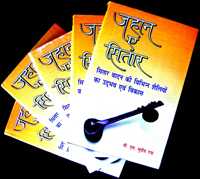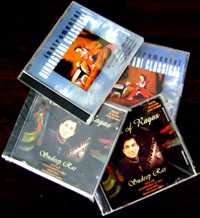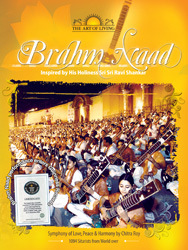Indian Classical Music refers to two related, but divergent styles of music in india.
The North Indian style is known as "Hindustani music", while the South Indian style is
referred as “Carnatic music”.Both styles are very much in practice in india.
The basic scale of Hindustani music is similar to the 12 note western scale.The main difference is that in Indian classical music swaras or notes may vary slightly to suit the particular raga that is being performed. The same note in different raga may have slightly different positions.The notes themselves have names as in western music such as:
Indian scale: Sa Re Ga Ma Pa Dha Ni
Western scale: Do Re Mi Fa So La Si
These seven notes are like the white keys on a piano keyboard. There are five intermediate notes one between Sa and Re is called "Komal Re" (like Re flat in western scale), between Re and Ga is "Komal Ga" (like Mi flat), between Pa and Dha is "Komal Dha" (like La flat), and between Dha and Ni is "Komal Ni" (like Si flat). That accounts for four notes. The fifth lies between Ma and Pa but it is called "Tivra Ma", like Fa sharp.
Indian scale: Komal Re, Komal Ga, Tivra Ma, Komal Dha, Komal Ni.
Western Scale: Flat Re. Flat Mi, Fa Sharp, Flat La, Flat Si.
Raga
Raga is described as a set of notes which is pleasing to ears usually a minimum of five to eight notes, together with a set of rules to combine them effectively and create a particular mood, in Sanskrit it is described as “ranjayate Iti ragah”.Each raga has a specific,character such as devotional, joyful,serious , for example Raga Bhairav(devotional),Raga Yaman (Joyful),Raga Todi (serious).A raga also has a particular time of day when it is performed, usually specified as four prahars 4 to 7, 7 to 10, 10 to 1and 1 to 4 Some ragas are specially sung in specific seasons, for example Raga Basant is sung during basant ritu (spring season).Raga Malhar is performed during monsoon season, and during these specific seasons they can be sung at any time.
Bandish (Compositions)
In each raga there are several bandishes or compositions composed which are more or less like songs in vocal music bandishes are known as gats in instrumental music such as Razakhani gat & Maseetkhani gat or Madhya laya gat or drut gat, which obey the rules of that Raga and effectively convey its mood, For example Basant ritu related ragas will have compositions that describe the flowering during spring season like“ketaki gulaab juhi chandan ban phooley” describes the true essence of Basant ritu.Similarily monsoon related Ragas will have compositions that describe the gathering of clouds,falling raindrops,and the lightning and thunder.




